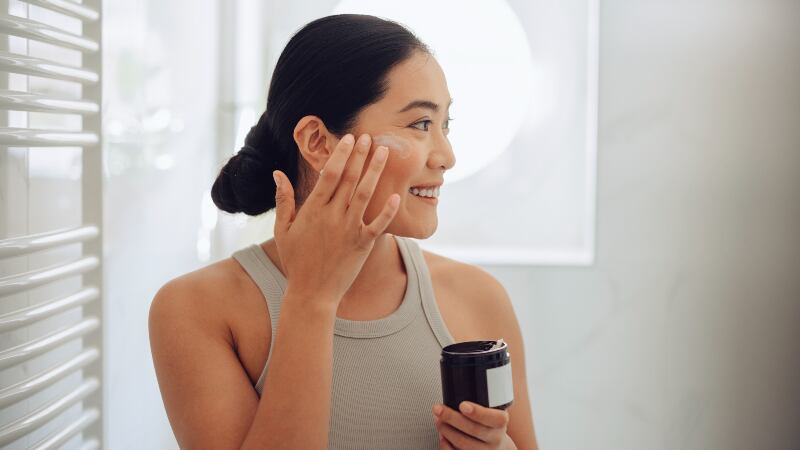Preservatives are added to cosmetics mainly to inhibit or kill microbial infestation, and to extend a product’s shelf life.
To limit overuse of preservatives and ensure product safety, cosmetics firms typically use toxicological data to determine the maximum permitted doses of preservatives, and the effect on skin microbiota is often not taken into account.
As such, some Chinese researchers conducted a study in 2021 to evaluate the antimicrobial effect of nine common chemical preservatives used in cosmetics by analysing multiple Staphylococcus epidermidis (S. epidermidis) isolates.
S. epidermidis is a Gram-positive bacterium and part of the skin microbiota.
A total of 77 S. epidermidis isolates from 46 zygomatic (cheek bone) skin samples were examined in this study. No more than two isolates were included from each person.
The age of the participants ranged between 12 and 65 years.
Minimum inhibitory concentration (MIC), mutant prevention concentration (MPC), and time-kill curves are three commonly used parameters to assess the potency of antimicrobials.
MIC is the lowest concentration of an antimicrobial that completely prevents visible growth of the test strain under strictly controlled in vitro conditions; MPC is the lowest antimicrobial concentration required to inhibit the growth of the least-susceptible cells that may present in high-density bacterial populations; and time-kill curves monitor bacterial growth and death.
The study findings demonstrated that the maximum permitted doses of 2-bromo-2-nitro-l,3-propanediol, ethyl 4-hydroxybenzoate, hexadecyltrimethylammonium bromide, and imidazolidinyl urea were significantly higher than their MICs and MPCs.
“At the maximum permitted doses, two preservatives were shown to completely kill 10 colony-forming unit (CFU)/ml of S. epidermidis in less than one hour in the Mueller Hinton (MH) broth (a liquid medium for determining MIC for antimicrobial agents). In addition, the maximum permitted doses of three preservatives were four to 64 times higher than their MICs. These could potentially disrupt the skin microbiota balance.
“The inhibitory effect of preservatives on S. epidermidis, which has been shown to be beneficial to skin health, suggested that the amount of these preservatives used in cosmetics should be extensively re-evaluated,” the authors wrote.
Pressure on skin microbiota
There is a wide spectrum of microorganisms on the human skin, including bacteria, fungi, yeasts, viruses, and mites.
Studies have shown that the skin microbiome play important roles, such as defense against pathogens, inflammation control, and modulation of adaptive immune responses.
Notably, S. epidermidis is said to protect against inflammation, infection and even cancer through interactions with keratinocytes, T cells, and other constituents of the skin microbiota.
MPC indicates the emergence of spontaneous resistant mutants within a population of 10 cells.
“Unlike antibiotics that usually have a wide MPC variation, the nine preservatives in our study showed stable MPC values in replicate tests. In fact, the MPCs of three preservatives were the same as their MICs.
“Among the preservatives that showed higher MPCs than MICs, the suspected mutant colonies showed the same MICs after purification. These data supported the fact that although preservatives were used in large quantities, high-level tolerant mutants might be rare to develop,” the authors said.
Furthermore, as each preservative has a limited antimicrobial spectrum, multiple preservatives might be used in a single formula, which will put further pressure on the skin microbiota.
Nevertheless, it should be noted that the findings were based on in vitro tests of S. epidermidis isolates in MH and phosphate buffered saline (PBS) broth, which could not fully reflect the effects of preservatives on S. epidermidis in human skin.
“Since the skin plays a role in absorption and metabolism, our results need to be confirmed via in vivo assays or 3D skin models. Moreover, the maximum permitted dose of preservatives should not be established only based on toxicological data, but also on the antimicrobial susceptibility of skin microorganisms.
“Cosmetic companies should consider S. epidermidis-friendly preservatives and avoid overuse of preservatives to help consumers maintain healthy skin with a balanced microbiota,” the writers reiterated.
Source: Journal of Cosmetic Dermatology
https://doi.org/10.1111/jocd.15690
“Effect of leave-on cosmetic antimicrobial preservatives on healthy skin resident Staphylococcus epidermidis”
Authors: Wei Zhang, et al





